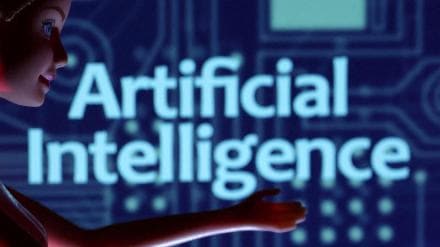By Bhausaheb Suryabhan Nagawade
As we approach 2024, corporate landscapes are shaping themselves under the influences of the march of technological progress and evolving market dynamics. In software development, though, the integration of Artificial Intelligence (AI) and Machine Learning (ML) is a force not merely illustrative of trend but transformative in nature.
AI-Driven Agile Methodologies
AI and ML are making Agile methodologies smarter by automating the various aspects of project management, which include sprint planning, resource allocation, and progress tracking. AI-driven analytics provide insights into bottlenecks for the development teams to optimize workflows in better alignment with business objectives. Using AI in Agile processes helps organizations become efficient and drives down the cost of development while maintaining high standards of quality.
Cloud Computing: AI-Powered Architectures
The union of AI and cloud computing is entirely changing the way software is developed, deployed, and scaled. These platforms, through the power of AI, bring in these advanced tools and services that further process the development, reduce customization development, and optimize the usage of resources. The use of AI-driven cloud solutions will allow organizations to reduce infrastructure costs, maximize scalability, and realize intelligent automation, leading to considerably high-cost savings and excellent performance.
Automated Testing and CI/CD with Machine Learning
Manual testing and deployment are not only time-consuming but also prone to errors. ML integrated with continuous integration, continuous deployment (CI/CD) pipelines means that the testing process gets automated, issues are identified in a faster way, and as such, quality is enhanced. ML helps predict potential failures and deployment strategy optimization, thus enabling an accelerated delivery cycle with a reduction in costs associated with manual intervention and downtime.
AI-Powered Code Reusability and Open-Source Adoption
Artificial intelligence and machine learning actually enable the creation and sharing of reusable code components, libraries, and frameworks. Lowering the expenses of development teams and shortening project timelines should occur by propagating a culture of code reuse, reliance on AI-augmented open-source solutions that require less custom coding and encouraging innovation and collaboration.
Strategic AI-Driven Outsourcing
While outsourcing may always be a go-to strategy for cost-effective software development, AI stands to enhance it in a number of ways. AI-enabled tools make it easier to find the most appropriate outsourcing partners, work remotely, and ensure quality control. Such empowerment through AI for communications and collaboration can help organizations get the best out of outsourcing while exercising control over development processes considered critical for their businesses.
Continuous Learning and AI-Driven Skill Enhancement
It is thus important to invest continuously in professional development for your software development team. AI-based training platforms will provide customized learning experiences, help identify skill gaps in an individual, and suggest focused training programs. Through AI that supports skills development, an organization can thus boost the productivity of its team and keep up with current technological progress.
Optimizing Subscriptions and Licenses with AI
With AI, organizations can get more value from software licensing and subscription procurement by determining trends in usage and identifying underused resources. AI-driven analytics will recommend activities to save on costs like license consolidation, better-negotiated deals, and migration to open-source alternatives. All this ensures no overspending on software tools and licenses.
Embrace Low-Code/No-Code Platforms with AI Integration
Combine low-code/no-code platforms with AI capabilities to enable companies to build applications quickly and inexpensively. These platforms allow non-developers to build functional prototypes and internal tools, driving down the need for custom development. There are limitations with these platforms, but integrating AI will extend these limits toward complex applications that will increase more savings.
How AI Can Help Manage Technical Debt
AI insights often come up with ways to identify technical debts and suggest strategies for refactoring codebases. Through active management of technical debt using insights from AI, organizations can keep a clean and maintainable codebase, preventing long-term cost escalations and guaranteeing sustainable software development.
Continuous Evaluation and Adaptation with AI
In an era of constant change, this is all about continuous evaluation and adaptation. AI and ML arm the necessary capabilities for trend monitoring, future predictive development, and optimization of strategies related to software development. The net result is a culture of relentless improvement and an organization that remains competitive, effective, and innovative under the extremely dynamic digital environment.
AI and ML are not just enhancing the current state of software development but are fundamentally transforming it. Embedding AI and ML in software development is more than a strategic advantage; it is crucial for competitiveness in this digital world. Adoption of such technologies by organizations will breed innovation, cut costs, and deliver high-quality, future-proof software.
(The author is the Founder and Managing Director at NikxIT Technology. Views are personal)
